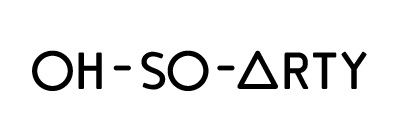2017 has been an exciting year for us over here at Oh-So-Arty! It marked our first year as an international platform with local guides in over 20 international cities. Because of this we’re oh-so-looking forward to 2018 and all that the new year has in store for us. That is why we were so excited to hear about Maya Attoun’s new art book which celebrates 2018 through the form of a weekly planner.
As the planner organizes 2018 it also looks back 200 years to 1818 and the publication of Mary Shelley’s novel, Frankenstein. “Frankenstein was published on the first day of 1818 and I wanted to address this date by creating a book which starts exactly 200 years later,” Attoun explained when asked why she chose the medium of a weekly planner for her work. Shelley’s ominous and at times eerie novel has been interpreted into 160 pages of beautiful graphite illustrations. While the correlation between 2018 and 1818 may seem indistinct, Attoun beautifully describes the innate relationship between these years two centuries apart:
“I think there is an interesting correlation between the neo-gothic times which were the beginning of modernism and our times which are the disintegration of modernism.” She continued, “I feel that the monsters we confront today are the blasting of digital and visual information; the condition of post-truth where true or false, important and marginal lose their hierarchy.”
Attoun in her studio in Tel Aviv
As we enter a new year we grapple with our own fears or monsters and it is exactly these mundane models of modernity that are dissected in Attoun’s intricate illustrations.
While the overarching theme of the planner is Frankenstein, a major motif of Attoun’s oeuvre, not all of the illustrations are direct references to Shelley’s text. For example some images are taken from everyday photos that Attoun posted on her social media or her “instagram diary” as she refers to it. There are also depictions of plants, climate models, anatomical illustrations, graphs and other technical devices.
The power of Attoun’s project resides in its interactive component. Each illustration is given a new purpose when acted on by whomever the planner belongs to. None of the 160 pages bound in this book are static works of art and each piece takes on a new meaning every time it is written on. Attoun described her choice of a planner, saying, “I go back to using a planner because I wanted to do something which is interactive in the sense that is really involving the viewer or user.”
Simultaneously an object, an illustration, an artist book and a piece of performance art, Attoun’s weekly planner has elevated keeping track of time to an art form for the modern age.
To learn more about the Tel Aviv art scene join a private art tour with us, here.






![Textual Inspirations of Art World Professionals [PART 1]](https://images.squarespace-cdn.com/content/v1/57eb2e2215d5dbca6f4c6307/1511731738847-A0BDLDI1ES8VGC7WLR6M/bf83d539a610078de046094d9fe08eec.jpg)




















